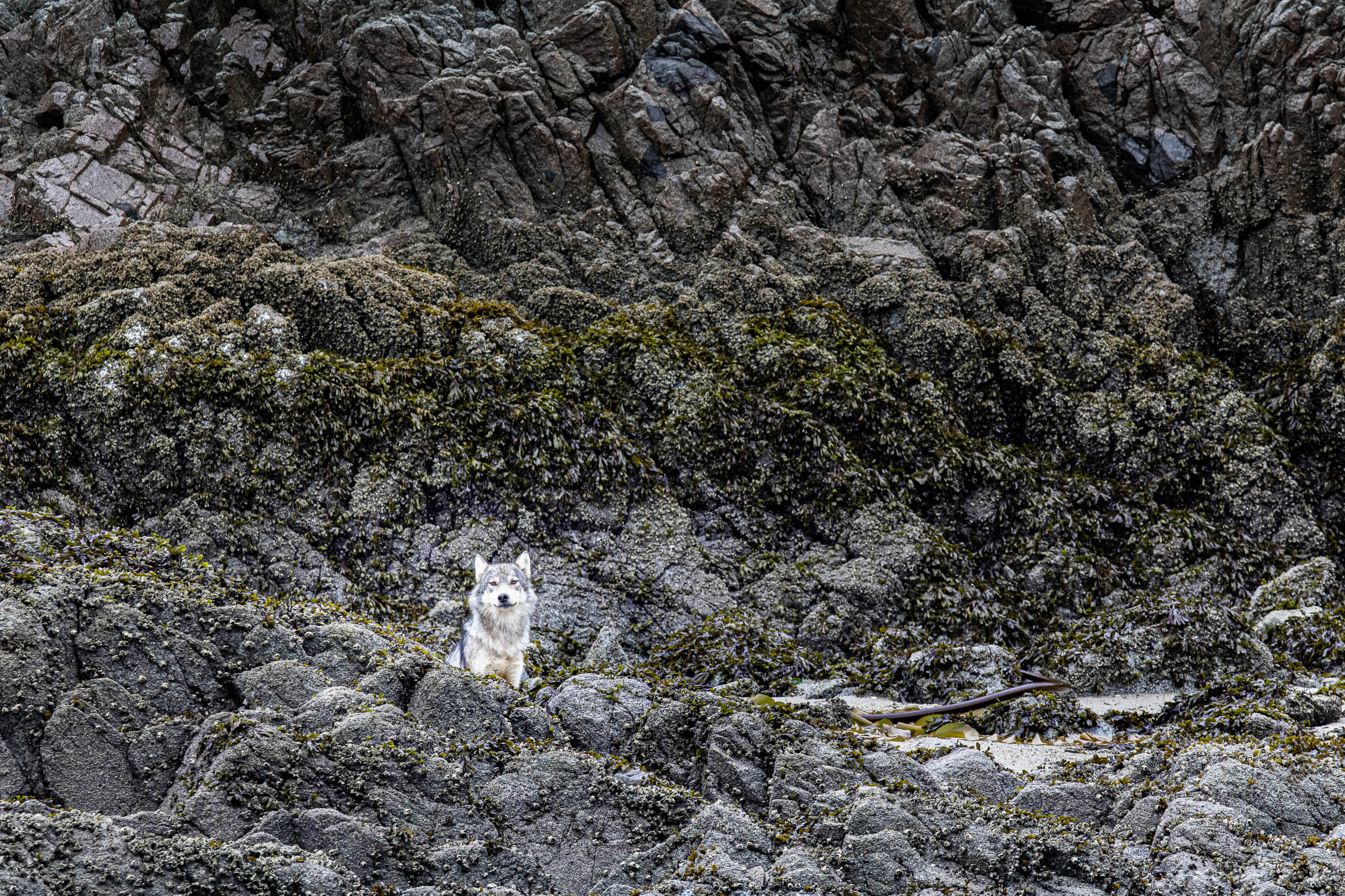
Moving like shadows along the shore searching for meal, sea wolves can swim for kilometers between islands to satisfy their hunger.
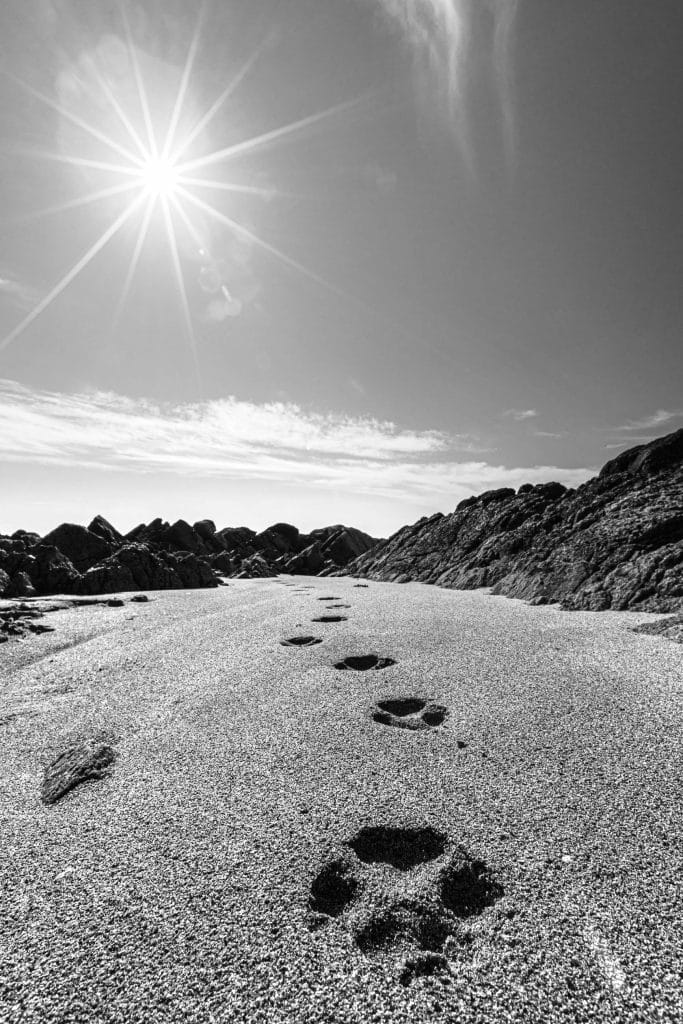
A successful adventure
Not too long ago, I was able to fulfill a long-standing dream: to search for the elusive sea wolf in the Great Bear Rainforest on the territory of the Tsimshian First Nations in British Columbia in western Canada. I shared this adventure with my travel companion, photographer and good friend Nicolas Lemieux, who had also long dreamed of encountering this emblematic animal of the Pacific coast. These coastal wolves can be found from the extreme southeast of Alaska to Vancouver Island. After some research, we chose a specific deserted island in Great Bear Rainforest that has so far been spared from tourism and industrial activities. Since this region of Canada is often exposed to heavy rainfall and strong winds, we took advantage of a lull to leave the mainland in our small five-metre-long zodiac loaded with a week’s worth of supplies. After a few hours through rain and fog, we arrived at the end of the island. We prepared to land on a fine sand beach located in a small bay that we spotted on the map and seemed to be the perfect location to set up a base camp. I jumped from the boat into the cold water and immediately heard a wolf howl. We moved slowly behind the rocks to observe the other side of the bay saw a group of four wolves singing together on the beach. That first observation filled us with emotion and wonder. Our lucky star led us directly into the wolf’s den on our first day. We then set up our camp on the beach at the edge of the forest and spent four magnificent days observing the pack and their way of life in the bay before exploring other islands in the area. This bay is a strategic area for the pack due to the arrival of a small stream flowing into the sea, attracting a large number of fish at low tide, especially salmon during the spawning period.
A Captivating Encounter
There were five adult wolves and a yearling pup in the pack. The dominant male (or alpha male) was white and much larger than the rest of the group. It was clear that his physical size and age were factors that had established him as the leader of the pack. But his position of dominance was not absolute. Although he had unquestioned authority over most of the others, his mate Scar (we named her after the scar on her left eye), a small red female, was also an influential member of the pack. As the dominant female, she was the most intrepid of all.
On the second day, she walked straight towards us without any hesitation. Seeing the alpha female approach us, the other members gathered behind her to follow cautiously before coming to sniff us up close. Were we the first humans to tread on their territory and intrude into their lives? Finally, just one meter away from me, Scar froze to better sense us while licking her lips, then backed away a few steps to rejoin the pack, who were standing a few meters behind. After analyzing us and classifying us as “bipeds to keep an eye on,” they returned to their activities in the mudflats a few minutes later. It was the only moment that the pack honored us with their presence up close. We spent the following days observing them from a distance with binoculars, hypnotized by the intense bonds and spirit within the pack. We did not dare to approach them anymore for fear of causing them to flee from their territory and depriving us of their presence.
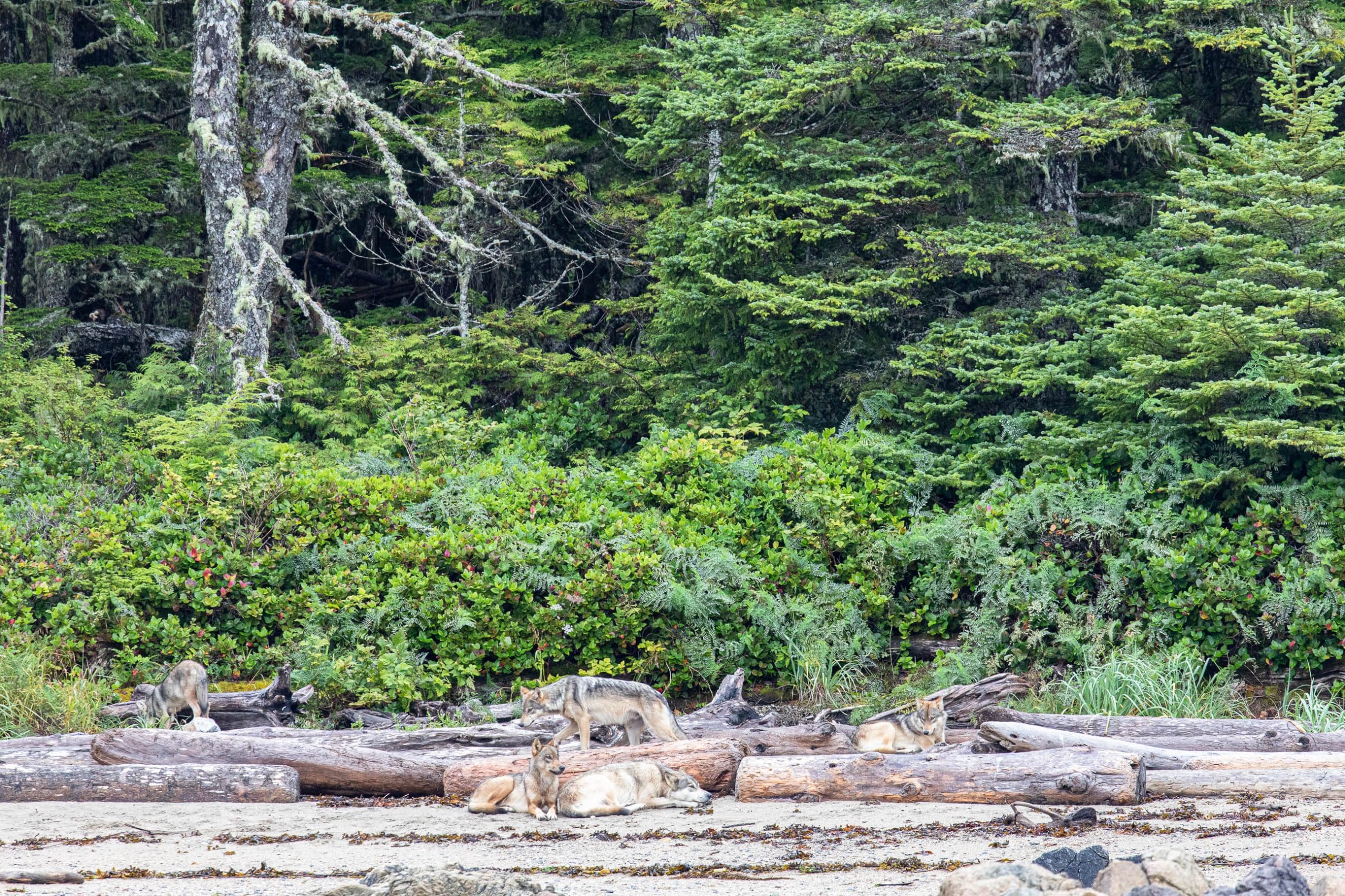
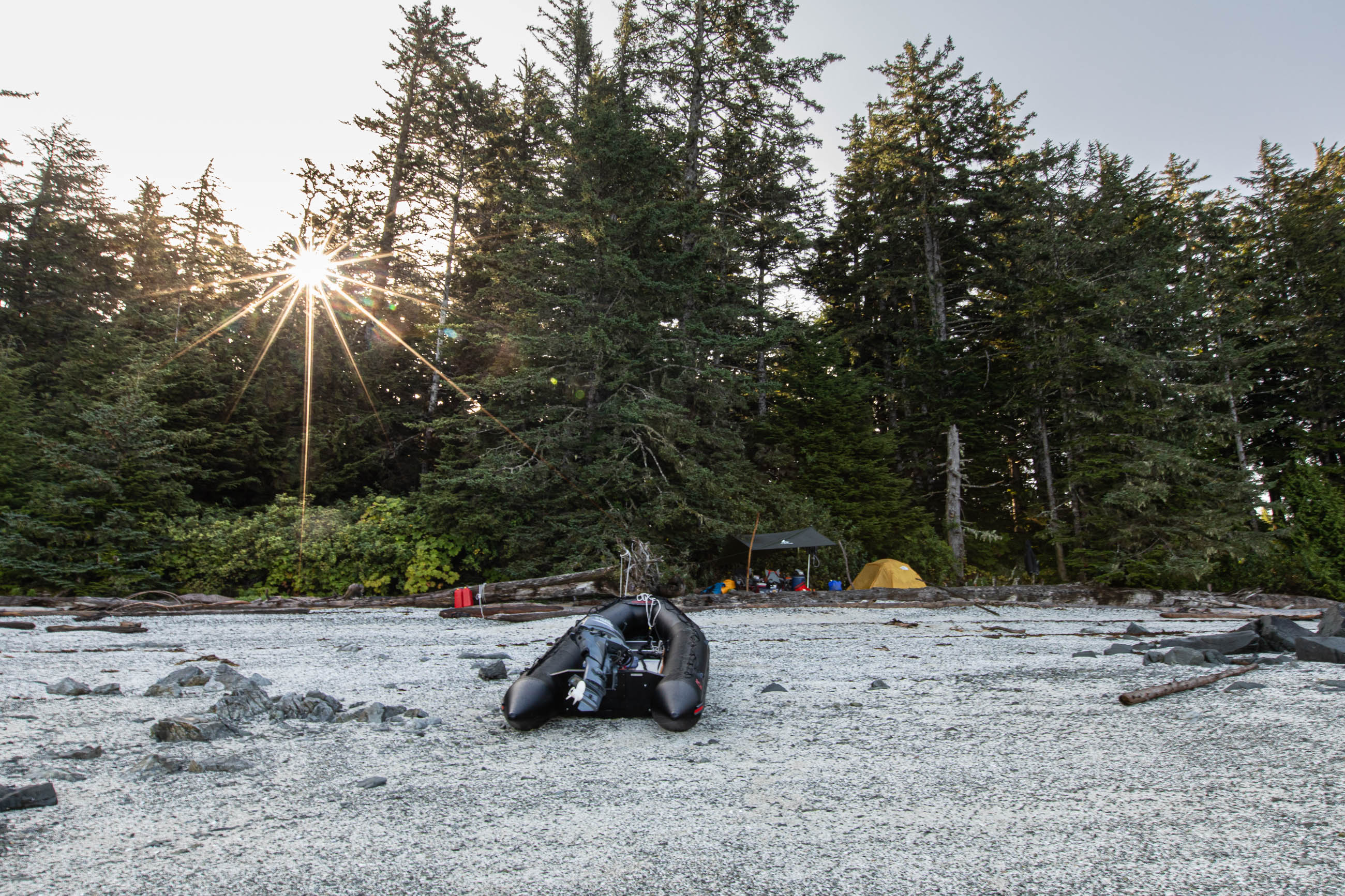
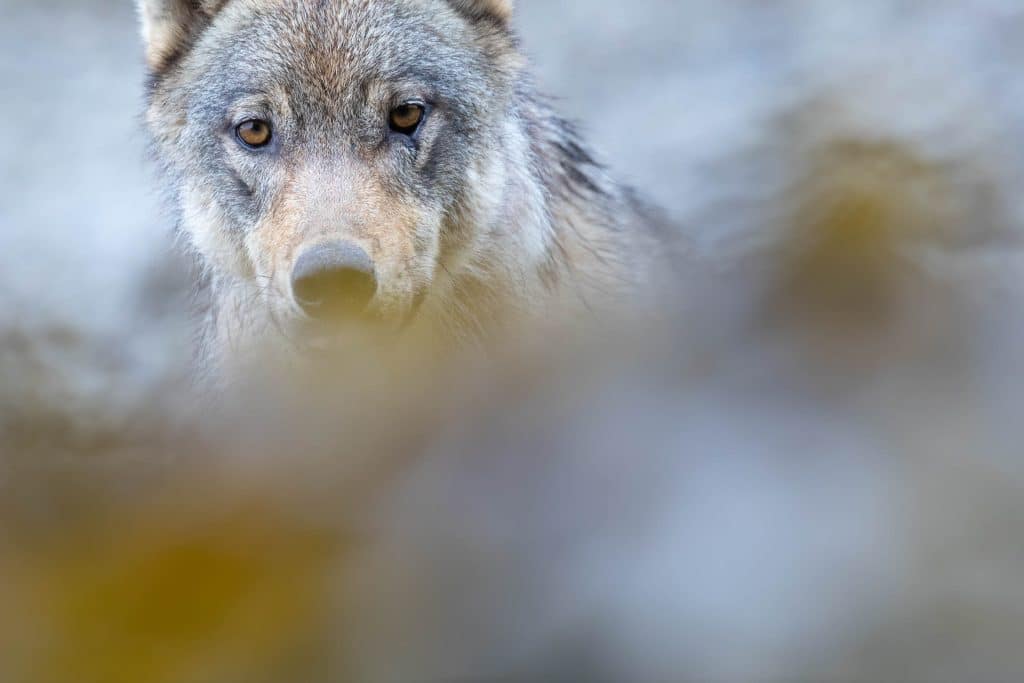
A distinct subspecies
The wolves found in the coastal rainforests of British Columbia are as unique as their habitat. Recently recognized as a genetically distinct population from other gray wolves (Canis lupus) in the province, this coastal variation of the species has been isolated in this marine ecosystem for thousands of years. Unlike their inland cousins, coastal island wolves are fully devoted to the sea. Their genes prove it with DNA that is distinct from inland wolves and a smaller size. Coastal wolves can swim like otters and fish like the bears they share the rainforest with.
Their habitat consists of islands, fjords and rainforests, exposed to the rigours of the north Pacific Ocean. A very particular characteristic of the coastal wolf is its fur, often taking on reddish hues to blend in with the sandy coastlines and orange algae. However, it is not uncommon to observe completely black wolves. Their territory often consists of multiple islands, forcing them to face tides and ocean currents to travel from island to island. Some wolves swim several kilometers to reach new territories.
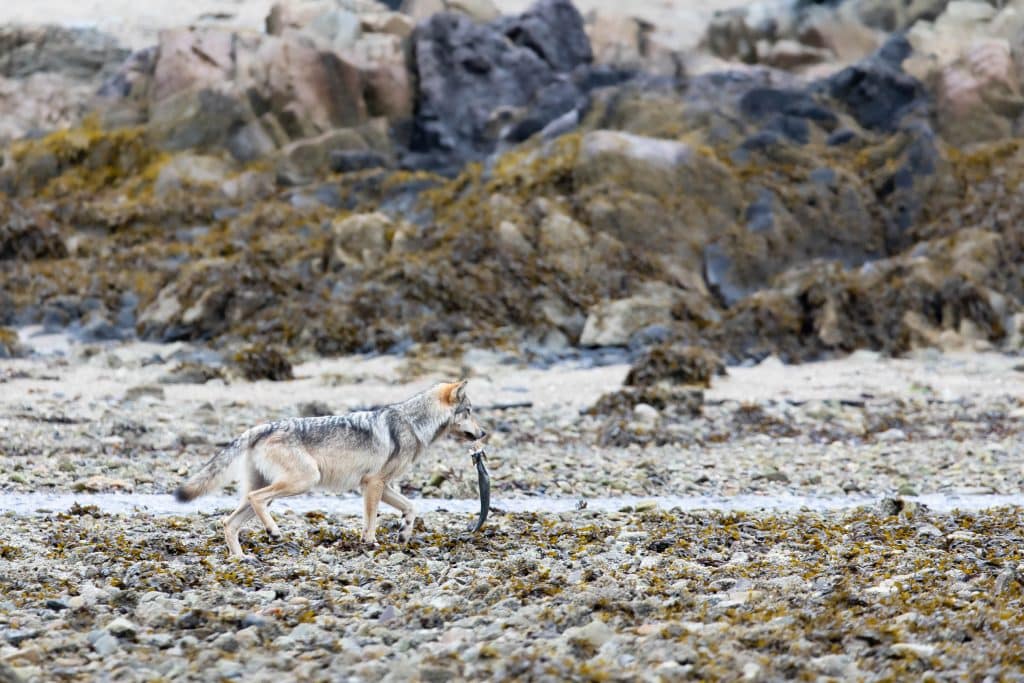
A specific diet
During each tidal cycle, a gigantic buffet fills the mudflats, rich in crustaceans (clams, barnacles) and other delicious treats that the ocean can deposit on shore. The coastal wolf’s diet is often more than 75 percent from the sea. It is mainly composed of fish, crustaceans, seabirds, berries, stranded cetaceans, seals, sea lions, and, depending on the region, deer and beavers. Rivers and streams provide an abundance of rich food during the salmon spawning season. During this time, like bears, wolves feed on the terrestrial ecosystem by dragging salmon carcasses into the forest, where they nourish other species and fertilize the plant world. This nitrogen-rich marine resource helps fuel the growth of giant trees in the rainforest.
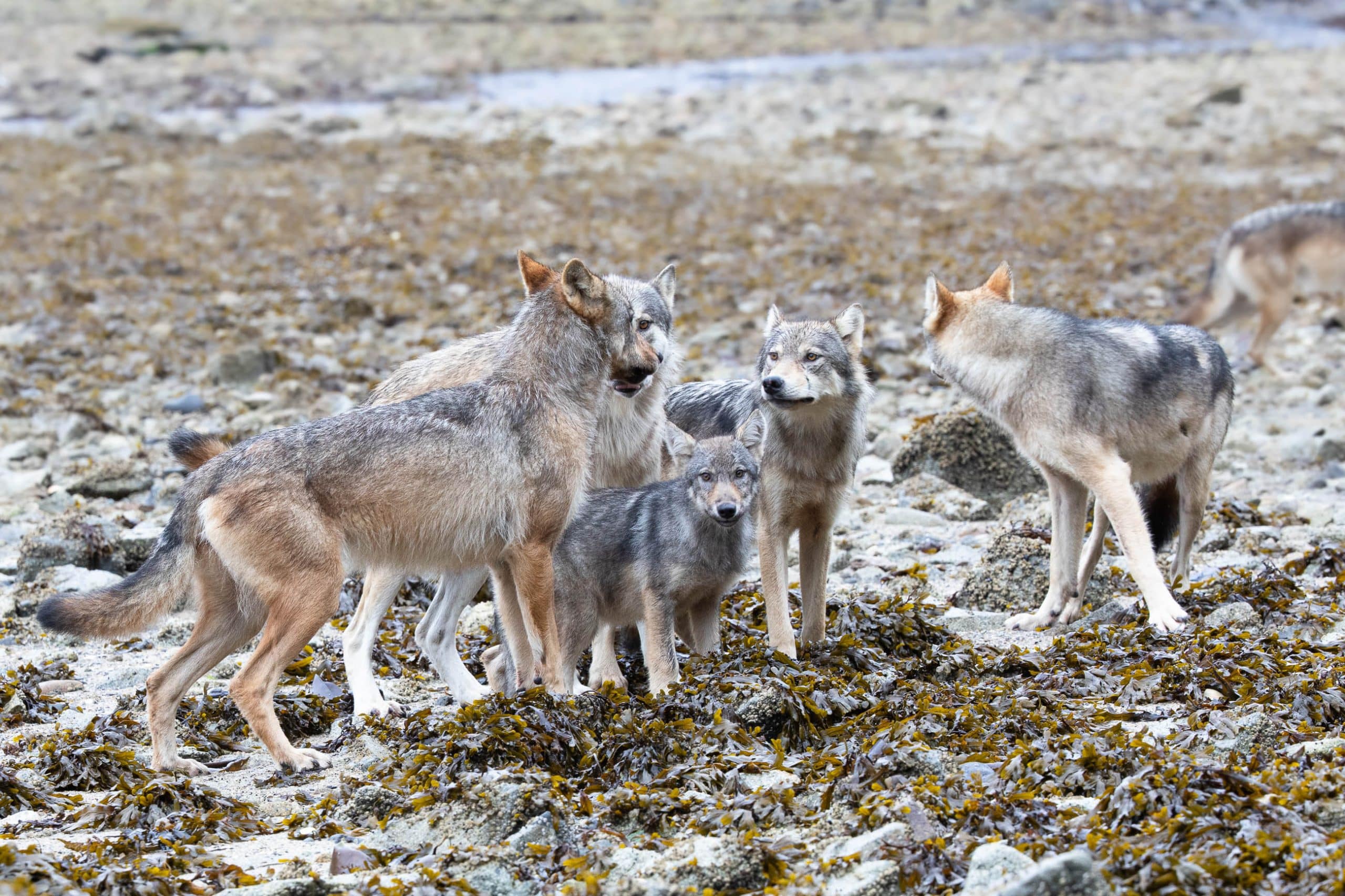
An increasingly growing threat
Unlike other wolves throughout the American continent, which were hunted to near extinction, the coastal wolves of British Columbia have thrived so far in their isolated regions. But they are now facing new challenges as human activities increasingly threaten their survival. Trophy hunting, deforestation and the growing extraction of other natural resources are reducing their numbers and their natural habitat. In British Columbia alone, the provincial government estimates that about 1,200 wolves are killed each year for recreational purposes (hunting and trapping). To combat trophy hunting targeting coastal wolves, as well as black bears and cougars, the nature conservation organization Raincoast, in partnership with local First Nations clans, has decided to raise funds to buy up all hunting permits in their territories. Their goal is to own all hunting permits issued over the 64,000 square kilometres of the Great Bear Rainforest so as to not allow trophy hunters in the area.

